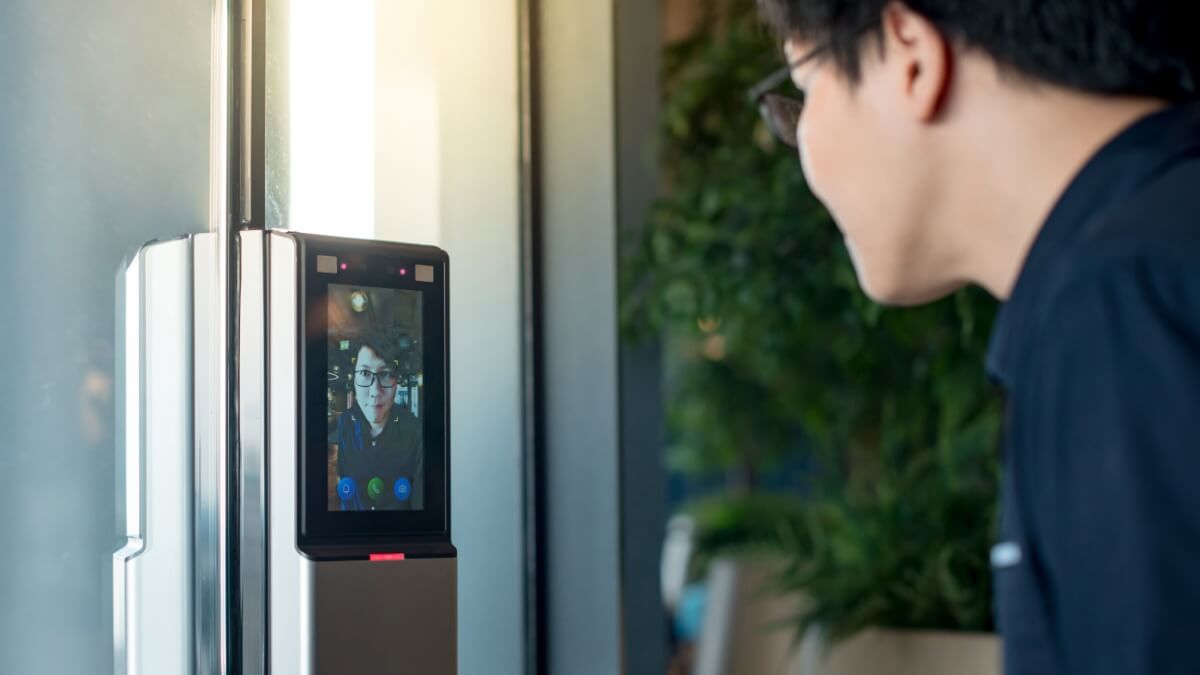Overview
Edge Face Recognition technologies offer users advanced security options, convenience, and increasingly personalized and delightful experiences.
This article covers the top 6 Edge Face Recognition applications and explores how this technology can make people’s businesses and lives more productive and technologically secure.
How does Face Recognition Work?
Before we dive into Edge Face Recognition and its applications, let’s first explore how Face Recognition works.
Face Recognition technology can identify or verify an individual’s identity by analyzing their face. Face Recognition AI operates by matching the faces of individuals caught on camera to a database of pre-recorded faces.
Although there are numerous types of Face Recognition systems, they generally work in the following way:
Step 1: Face detection identifies a face
The camera locates and identifies a clear image of a face. The face may be identified when individuals are alone or in a group.
Furthermore, Face detection may identify the person facing straight ahead or facing to the side, so the camera can only capture their profile.
Step 2: Face analysis measures a face
The image is analyzed by reading how a person’s face is mapped out.
The AI software analyzes and measures aspects such as the distance from one’s forehead to their chin and the distance between both eyes.
It also determines the way the ears, lips, chin, and cheekbones are shaped, among other things.
The aim is to identify the key features of your face that make you, well, YOU.
Step 3: The captured image is changed into data
Based on all the measurements gathered, a person’s face, which is classified as analog information, is converted to data and classified as digital information.
The face is now transformed into a mathematical formula with its own numerical code called a faceprint.
Faceprints are just like fingerprints. No two are the same.
Step 4: Face matching compares your face with a database
An individual’s faceprint is now in a database and may be compared with all other faceprints.
A person is assigned an identity when their faceprint is matched with another image in a Face Recognition database.
The top 6 Edge Face Recognition Applications
Applications for Edge Face Recognition cut across many verticals.
Most Face Recognition is currently processed in the cloud. However, with Edge Face Recognition, processing occurs close to the source. This offers low latency, high connectivity, and better bandwidth efficiency.
This localized aspect of Edge Face Recognition also enhances privacy. By transferring AI inferencing for Face Recognition to the Edge, data doesn’t need to travel to the cloud and back. This makes sure people’s personal data is less vulnerable to attack.
Not moving data around also allows companies to lower costs and, at the same time, increase efficiency.
Edge devices can run Face Recognition programs speedily and precisely. They’re also low-cost, flexible, and safe, making them one of the best options at present.
1. Edge Face Recognition offers a higher level of security in banking
Edge Face Recognition can be used instead of a password or fingerprint biometrics for people’s banking needs, which is a step up in security.
Many banks don’t allow internet connections for fear of security breaches. In line with this, Edge Face Recognition systems are ideal for financial institutions as they don’t require an internet connection to function.
Some Face Recognition systems even include ‘liveness detection,’ which ensures that a biometric image is not a digital or paper reproduction of a person’s face.
2. Retail benefits from Edge Face Recognition
Face attribute detection, which looks for qualities such as gender, age, mood, and head movements (e.g., nodding, shaking), is crucial for retail use cases. These include pushing customized ads, messaging targeted audiences, and collecting detailed statistics on store visitors.
From its low costs to reliable service connectivity, Edge Face Recognition solutions may suit retail businesses more than cloud-based options.
3. Edge Face Recognition delivers advanced security to your home or business
As mentioned earlier, Edge Face Recognition solutions offer improved latency.
This is especially important when securing your home or business in the form of a home security camera or smart lock. If your Face Recognition system does pick up the face of an unknown person (e.g., someone that isn’t in your system or someone banned from your establishment), you want to receive a notification about that as quickly as possible.
Aside from this security aspect, the reduced latency afforded by Edge Face Recognition technologies ensure that you won’t get locked out of your home or business in a system outage.
4. Edge Face Recognition aids access control
When it comes to access control, swipe cards can be replaced with Face Recognition technologies to keep workplaces safe and secure.
Combine this with Edge computing, and you have an advanced security system that makes sure only authorized people have access to particular machinery and restricted work sites.
An excellent example is the mining industry, where swipe card technology is open to abuse, and cards can get lost or damaged.
Edge Face Recognition overcomes many security issues that the mining industry is currently facing due to its speed, accuracy, and ability to run offline in remote locations.
5. Non-human faces are identified quickly and easily with Edge Face Recognition
Did you know that the same technology that identifies human faces can be programmed to work on cats, dogs, and other non-human faces?
This process works similarly to training a model to detect a human face. It just requires different training data.
One application for this type of Face Recognition technology is pet doors that will only open for the ‘correct’ pet.
This ensures that the next-door neighbor’s cat doesn’t end up in your customer’s house by mistake. Additionally, deploying Face Recognition technology at the Edge allows users to enjoy all the benefits of Edge computing.
6. Edge Face Recognition benefits healthcare
Edge Face Recognition is perfect for the healthcare industry.
Speeding up the check-in process for patients can be done with Edge Face Recognition. This is important because doing without piles of paperwork and ID checks can improve the speed at which emergency cases are dealt with.
Healthcare also benefits from Edge Face Recognition when there are laws about how far healthcare data is allowed to travel. An example of this is the Health Insurance Portability and Accountability Act (HIPAA). HIPAA states that data must remain in the jurisdiction where it is created to limit the transmission of people’s sensitive healthcare data.
Edge Face Recognition can help individuals and organizations
Face Recognition offers people and businesses advanced security options. When combined with Edge computing, Face Recognition systems become faster, less costly, and more reliable.
Edge Face Recognition offers users convenience and an increasingly personalized experience outside of security use cases.
While this post has covered some of the most significant Edge Face Recognition applications known right now, innovative use cases will continue to develop as Edge solutions make their way into more Face Recognition products.

